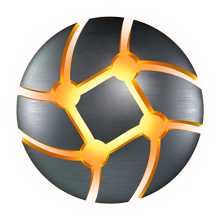How Cerebral Palsy Affects Your Limbs
Cerebral palsy is generally caused by damage to parts of the brain, especially the ones that control movement and posture. The brain damage varies from an extent to the other and it can lead to several issues of movement, hearing, speaking, and walking.
In this article we are going to explore how cerebral palsy affects your limbs in particular and what there is to do about it.
What Causes Motor Impairments in the arms and legs?
Cerebral palsy is a developmental motor disorder caused by some sort of damage to the brain before, during or after birth. It is mostly caused by damage to the motor cortex. This is the part that is responsible for all our voluntary movements. When this is disrupted, our arms and legs don’t function normally, causing impairments.
Depending on the severity of each case, every individual can have mild or severe symptoms in his/her legs and/or arms. Medically speaking, when cerebral palsy affects the legs, it’s called spastic diplegia. When however, only one side of the body is affected, it’s called spastic hemiplegia. Motor dysfunctions are called spastic quadrilegia.
Here you can find a visual explanation as well of the different types of cerebral palsy.
How Does Cerebral Palsy Affect The Body?
Cerebral palsy is a wide condition with various different elements to take into consideration. Not one individual with cerebral palsy is the same so the extent to which cerebral palsy affects the body varies massively from one to another.
The limbs are most commonly affected, and in some more severe cases, even the capacity to talk. However, intelligence is not affected, and just around 30 to 50 percent of kids with cerebral palsy have some sort of cognitive impairment. All the symptoms of cerebral palsy however can be improved and one can lead a happy and normal life. Through the help of medical doctors, game therapy, speech therapy and more activities that are suited to each person’s case, one can enjoy life fully.
Cerebral palsy and walking
When there are different alterations to a person’s motor skills, they might develop an abnormal gait. Walking may become difficult, according to the various degrees of severity of the condition. Because muscles contract involuntarily, the individual having not much control in this, walking may be irregular. When the muscles in the legs are experiencing spasticity, they just become more tight and their motion becomes limited. Some gait patterns that develop in some individuals are:
- Toe walking
- In-toeing
- Out-toeing
- Scissor gait (when the knees touch or cross over one another)
- Crouch gait (when the ankles, knees and hips are bent)
Alongside with these symptoms, people with cerebral palsy might also experience chronic pain, fatigue, sleep problems and poor bladder control. Through therapy however, these all can be improved.
Cerebral palsy and the arms
According to the different type of cerebral palsy diagnosed, there are various degree to which a person’s hand can be affected. For example, spastic cerebral palsy is split into:
- Hemiplegia or diplegia: one arm and one leg on the same side of the body or both legs are affected
- Monoplegia: only one arm and or leg is affected
- Quadriplegia: both arms and legs are affected
- Triplegia: either both arms and one leg or both legs and one arm is affected
Sometimes, movements of the hands can be very rapid, or very slow. The type and severity of cerebral palsy needs first to be diagnosed and then a treatment plan shoudl be put in place so that the hand movements can become easier. You can find more information on cerebral palsy, causes and symptoms on the CDC website and our Blog, as we always update it.
Stasism is a revolutionary new social online platform with therapeutic physical video games made exclusively for people with Cerebral Palsy. The first of its kind, delivering a constant stream of new and exciting games, characters, features and much more, leading to a happier childhood. Discover how.
